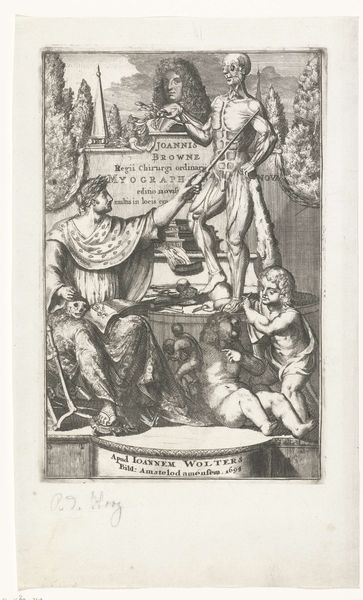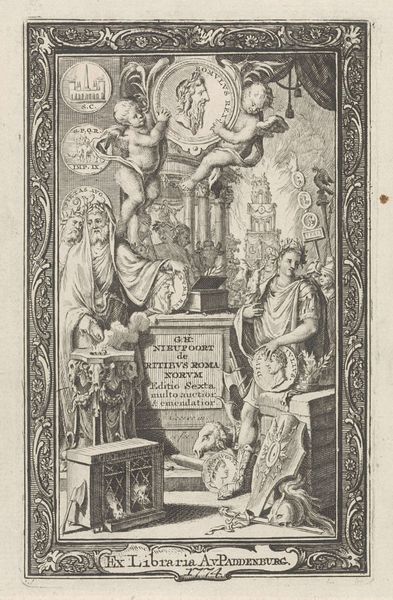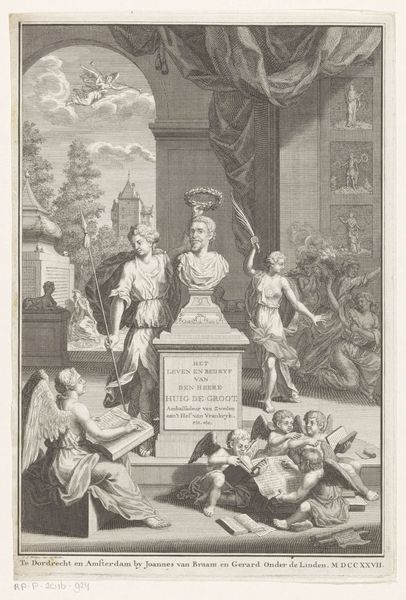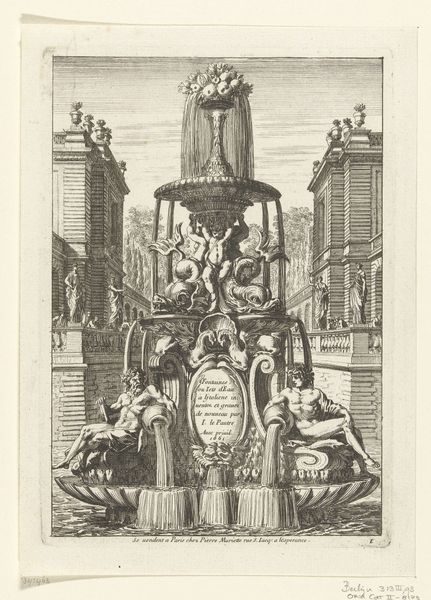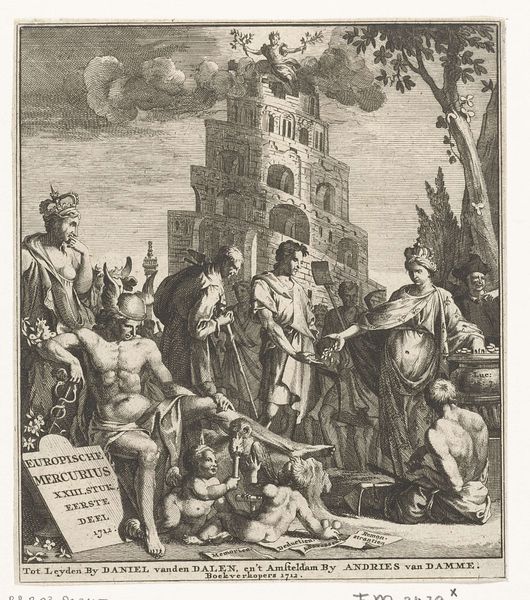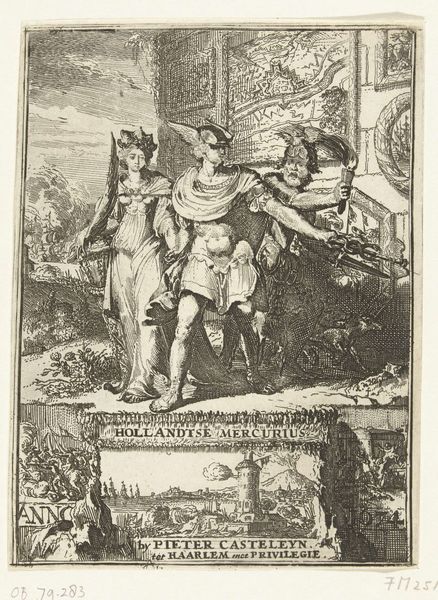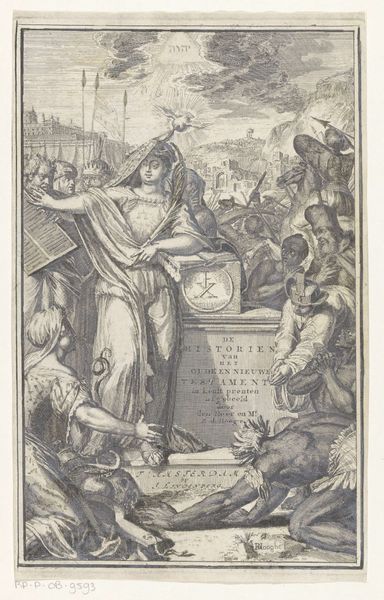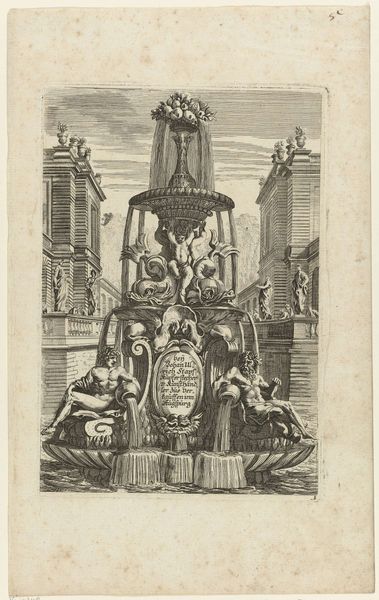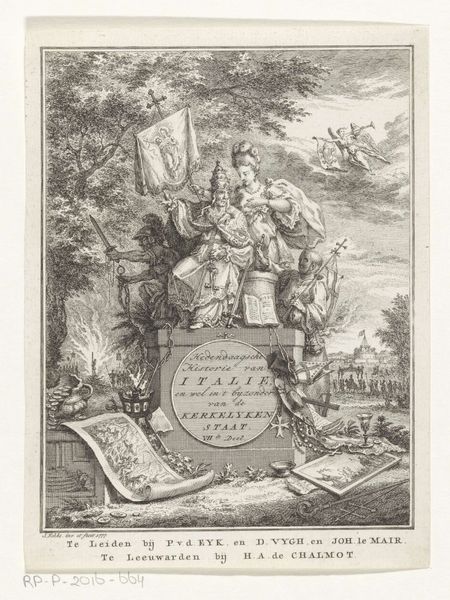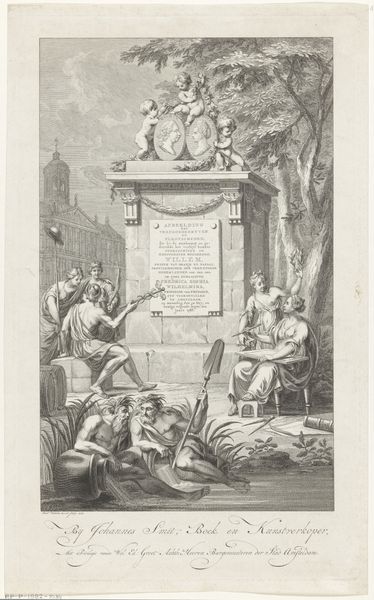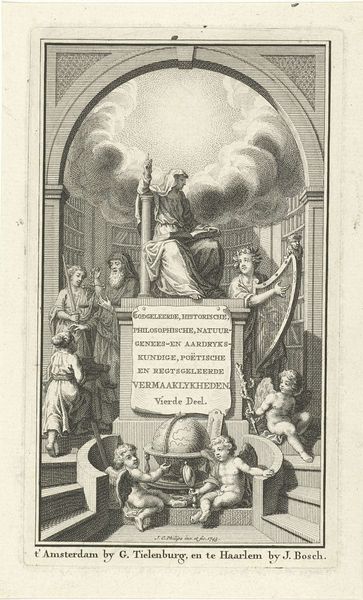
Dimensions: height 171 mm, width 106 mm
Copyright: Rijks Museum: Open Domain
Curator: Let’s take a look at "Allegorie op Italië," an engraving made in 1761 by Jan Caspar Philips. The piece currently resides in the Rijksmuseum. What are your first impressions? Editor: My initial feeling is of density. The composition is incredibly packed; it’s hard to find a visual resting point. What catches my attention are the textural differences between the hard architectural elements and the soft, fleshy bodies of the putti. Curator: Texture is definitely key here. It’s Baroque allegory at its finest, replete with symbolic layers. Notice how the figure in the center, likely representing Italy, holds the key, the emblem of papal power, whilst surrounded by ruins but also architectural marvels. It's a land built on both history and faith. Editor: That pose reads to me as almost proprietorial. Who exactly was this made for? Given the "Te Amsterdam" inscription, was this print intended for consumption outside Italy? It feels like an outsider’s representation. How does Philips understand his role in the construction of the “idea” of Italy? The amount of detail here required immense labor in both its design and production. Curator: That is astute; images such as these carried enormous political weight, both in solidifying and shaping identity. See how regions like Genoa, Lucca, and Tuscany are all listed there; these engravings offered people tangible connections to these geographical ideas, even without physical presence. They served as reminders and affirmations of shared cultural identity across time and space, despite constant conflict. Editor: Absolutely. Consider the distribution too; engravings allowed for wider circulation. This image wouldn't simply hang as "art"; it was likely copied, traded, reinterpreted, all expanding Philips’ original labor beyond his workshop. I’m interested in that dissemination of this imagery into a consumer market. Curator: It's a compelling reminder of how art constructs our vision. The allegories woven into artworks serve as mirrors that reflect not just ourselves but also the grand narrative we have all chosen. Editor: Precisely! The hand that held the engraver’s tool helped to construct both vision and reality.
Comments
No comments
Be the first to comment and join the conversation on the ultimate creative platform.
